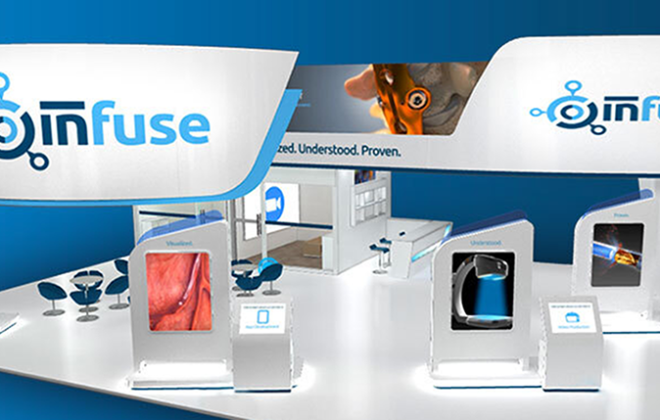Sales Performance with Engaging Content
Sales enablement is a critical aspect of any business strategy aimed at driving revenue growth and fostering customer relationships. In today’s digital age, where consumers are bombarded with information from various channels, crafting engaging content plays a pivotal role in boosting sales performance. This comprehensive guide will delve into the intricacies of sales enablement and how businesses can leverage compelling content to drive conversions and achieve their sales objectives.
Understanding Sales Enablement
A. What is Sales Enablement?
Sales enablement refers to the process of equipping sales teams with the resources, tools, and information they need to effectively engage with prospects and close deals. It involves aligning marketing efforts with sales goals to ensure seamless communication and collaboration throughout the buyer’s journey.
B. The Importance of Sales Enablement
Sales enablement is crucial for streamlining the sales process, enhancing productivity, and improving overall performance. By providing sales professionals with relevant content and training, businesses can empower them to deliver compelling messages that resonate with prospects and drive conversions.
C. Key Components of Sales Enablement
Effective sales enablement encompasses various components, including content creation, training and development, sales technology, and analytics. These elements work together to enable sales teams to engage with prospects effectively and address their needs at every stage of the buying cycle.
D. Sales Enablement Metrics: What to Measure and Why
Measuring the effectiveness of sales enablement efforts is essential for identifying areas of improvement and optimizing strategies for better results. Key metrics to track include sales conversion rates, content engagement metrics, pipeline velocity, and revenue attribution.
Crafting Engaging Content for Sales Enablement
A. Knowing Your Audience
Understanding the needs, preferences, and pain points of your target audience is fundamental to creating engaging content that resonates with them. Conduct thorough market research, gather customer feedback, and develop buyer personas to tailor your content to the specific needs of your audience segments.
B. Mapping Content to the Buyer’s Journey
Effective sales enablement content should align with the different stages of the buyer’s journey, from awareness to consideration to decision-making. By mapping out your content strategy accordingly, you can deliver the right message to the right audience at the right time, guiding them through the sales funnel seamlessly.
C. Leveraging Different Content Types
Diversifying your content portfolio with various formats such as blog posts, videos, infographics, case studies, and whitepapers allows you to cater to different learning preferences and consumption habits. Experiment with different content types to keep your audience engaged and interested in your brand.
D. Personalization: Tailoring Content for Maximum Impact
Personalization is key to creating meaningful connections with prospects and driving engagement. Leverage data and insights to personalize your content based on factors such as demographics, behavior, and past interactions. Addressing the individual needs and interests of your audience can significantly increase the effectiveness of your sales enablement efforts.
Strategies for Effective Content Distribution
A. Utilizing Social Media Platforms
Social media platforms offer a powerful channel for distributing sales enablement content and engaging with your target audience. Identify the platforms where your audience is most active and tailor your content strategy accordingly. Share valuable insights, engage in conversations, and leverage paid advertising to expand your reach and visibility.
B. Email Marketing: Beyond the Inbox
Email marketing remains a cornerstone of sales enablement, allowing businesses to deliver personalized content directly to prospects’ inboxes. Optimize your email campaigns with compelling subject lines, relevant content, and clear calls to action to encourage engagement and drive conversions. Consider incorporating interactive elements such as quizzes or surveys to enhance the user experience.
C. Content Syndication: Expanding Reach
Content syndication involves republishing your content on third-party platforms or partnering with other organizations to reach a wider audience. Identify reputable publishers or industry influencers within your niche and explore opportunities for collaboration. Syndicating your content can help increase brand visibility, drive traffic to your website, and generate leads.
D. Partnering with Influencers for Amplification
Influencer marketing can be a valuable strategy for amplifying your sales enablement efforts and reaching new audiences. Identify influencers who align with your brand values and target demographic, and collaborate with them to create authentic, engaging content. Influencers can help increase brand awareness, build trust with your audience, and drive conversions through their credibility and reach.
Optimizing Content for Sales Conversion
A. Implementing Call-to-Actions (CTAs) Strategically
Effective call-to-actions (CTAs) are crucial for guiding prospects towards the desired action, whether it’s signing up for a demo, downloading a whitepaper, or making a purchase. Place CTAs strategically throughout your content, making them prominent and compelling to encourage clicks and conversions.
B. Incorporating Visual Elements for Engagement
Visual content such as images, videos, and infographics can significantly enhance the effectiveness of your sales enablement efforts. Visuals not only capture attention and evoke emotion but also help convey complex information more effectively. Incorporate eye-catching visuals into your content to engage your audience and reinforce your message.
C. A/B Testing: Refining Content Performance
A/B testing involves creating multiple versions of your content and comparing their performance to determine which resonates best with your audience. Experiment with different headlines, visuals, CTAs, and messaging to identify the most effective combinations. Continuously monitor and analyze your A/B test results to refine your content and optimize conversion rates.
D. Analyzing Data for Continuous Improvement
Data analytics play a crucial role in optimizing sales enablement content and strategies for maximum impact. Track key metrics such as traffic, engagement, and conversion rates to gain insights into what’s working and what’s not. Use data-driven insights to refine your content strategy, identify areas for improvement, and make informed decisions to drive better results.
Overcoming Common Challenges in Sales Enablement Content
A. Lack of Alignment Between Sales and Marketing
One common challenge in sales enablement is the lack of alignment between sales and marketing teams. To address this issue, organizations should foster communication and collaboration between the two departments, align goals and priorities, and establish clear processes for sharing feedback and insights.
B. Content Overload: Quality vs. Quantity
With the abundance of content available online, businesses often struggle to cut through the noise and capture their audience’s attention. Instead of focusing on quantity, prioritize quality and relevance in your content creation efforts. Delivering valuable, insightful content that addresses the needs and interests of your audience is key to driving engagement and conversion.
C. Measuring Content ROI: Attribution Challenges
Measuring the return on investment (ROI) of sales enablement content can be challenging due to attribution issues. To overcome this challenge, businesses should implement robust tracking and analytics tools to monitor the performance of their content across various channels. By tracking key metrics and attributing revenue back to specific content initiatives, organizations can better understand the impact of their sales enablement efforts.
D. Adapting to Changing Consumer Behavior and Trends
Consumer behavior and preferences are constantly evolving, posing challenges for businesses seeking to engage with their target audience effectively. To stay ahead of the curve, organizations should continuously monitor market trends, gather customer feedback, and adapt their sales enablement strategies accordingly. By remaining agile and responsive to changing consumer needs, businesses can maintain a competitive edge and drive sustainable growth.
Future Trends in Sales Enablement Content
A. AI and Machine Learning in Content Personalization
Advancements in artificial intelligence (AI) and machine learning present exciting opportunities for content personalization in sales enablement. By leveraging AI-driven algorithms and predictive analytics, businesses can deliver highly targeted, personalized content experiences tailored to individual preferences and behavior.
B. Virtual and Augmented Reality for Immersive Experiences
Virtual and augmented reality (VR/AR) technologies offer immersive experiences that can revolutionize sales enablement content. From virtual product demonstrations to interactive training simulations, VR/AR has the potential to engage prospects in new and exciting ways, driving deeper engagement and faster conversion.
C. Voice Search Optimization for Sales Enablement
As voice search continues to gain popularity, optimizing sales enablement content for voice search becomes increasingly important. Businesses should optimize their content for natural language queries and conversational search patterns to ensure visibility and relevance in voice-enabled devices and platforms.
D. The Rise of Interactive and Shoppable Content
Interactive and shoppable content formats such as interactive videos, quizzes, and shoppable posts are gaining traction as effective sales enablement tools. By allowing users to engage with content in real-time and make purchases directly within the content experience, these formats can drive higher engagement and conversion rates.
Conclusion
Leveraging engaging content within sales enablement strategies is imperative for businesses aiming to boost sales performance and drive revenue growth. By understanding the needs of their audience, crafting compelling content tailored to the buyer’s journey, and implementing effective distribution and optimization strategies, organizations can engage prospects effectively and guide them through the sales funnel.
Moreover, by staying abreast of emerging trends and technologies in sales enablement content, businesses can stay ahead of the competition and drive sustainable growth in today’s dynamic marketplace. Remember, the key to success lies in delivering value, building relationships, and continuously adapting to meet the evolving needs of consumers. With a strategic approach to sales enablement content, businesses can unlock new opportunities and achieve their sales objectives with confidence.
Blog Categories
- 3D Animation (2)
- Company News (2)
- Design Graphics (1)
- Healthcare Operations (4)
- Industry News (10)
- Sales Enablement (2)
- Software Developing (2)
- Uncategorized (1)
- Virtual/Augmented Reality (3)




